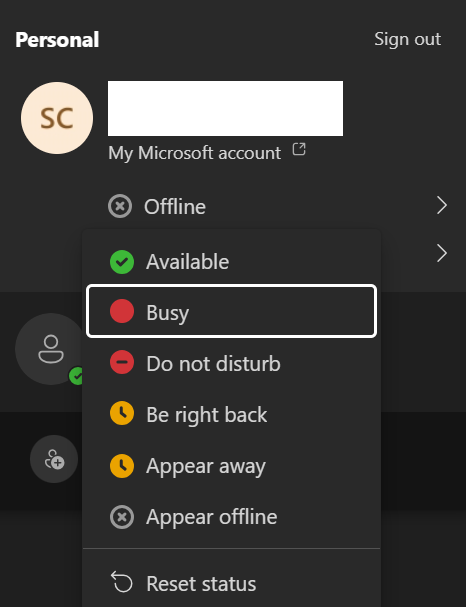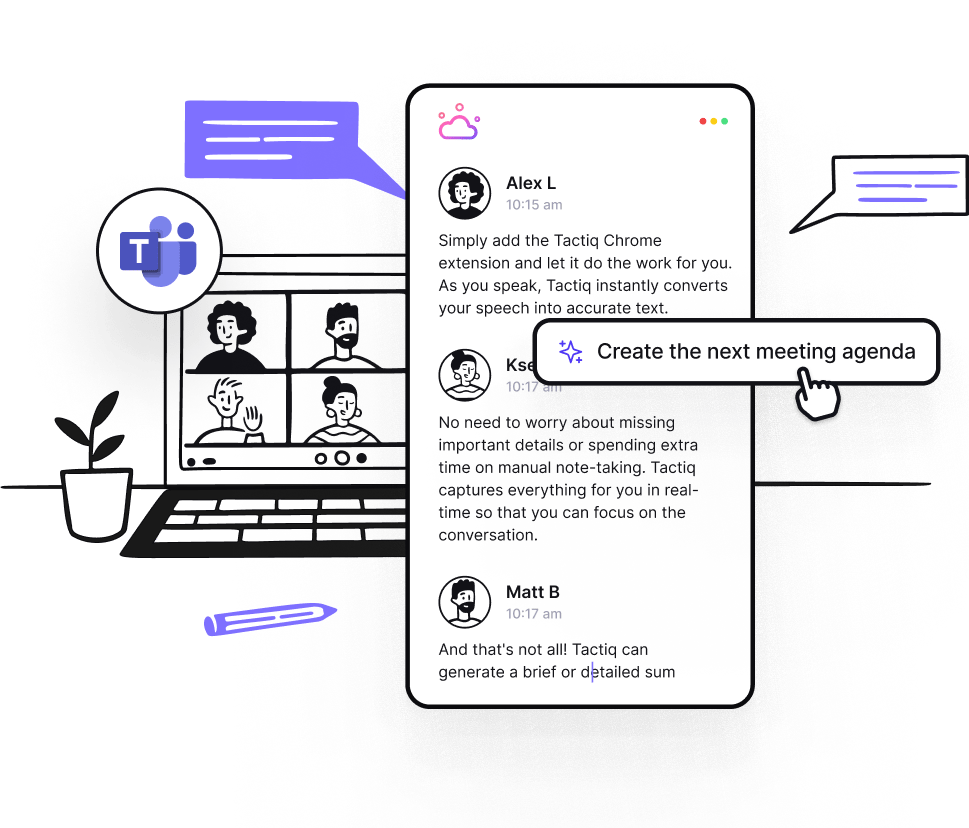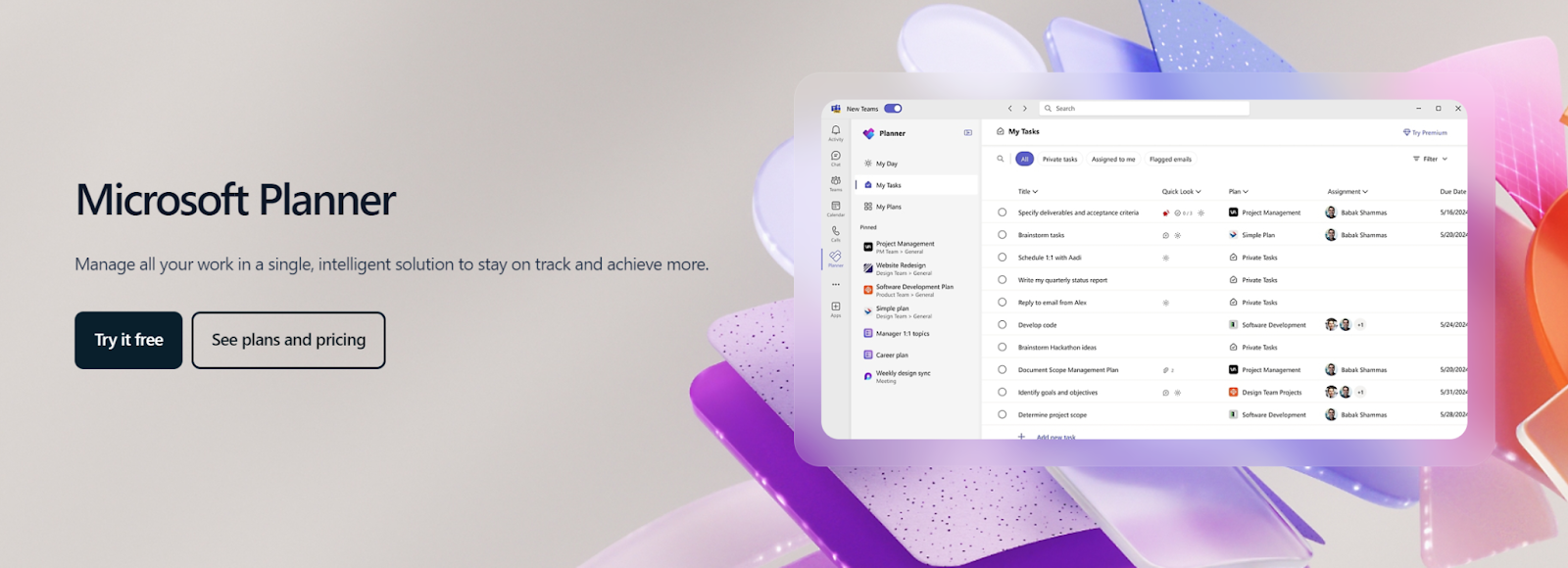Keep Microsoft Teams Active with These Simple Tips
September 18, 2024
September 18, 2024
June 12, 2025
June 12, 2025
Why Keeping Microsoft Teams Active is Important
Using Microsoft Teams for work collaboration is crucial in today's digital world. Staying active on Teams helps you communicate quickly, share ideas, and keep projects on track. Let's explore why keeping Microsoft Teams and your computer active matters for you and your team. For more insights into Microsoft Teams, check out these related articles: Clear Microsoft Teams Cache for Better Performance, Test Audio in Microsoft Teams: Step-by-Step Guide, and Top Microsoft Teams Alternatives in 2024.

Importance of Real-Time Collaboration and Communication
Real-time collaboration means you and your team can share information instantly. Whether you're working on a document, discussing a project, or making decisions, real-time communication ensures everyone is on the same page. When you keep Microsoft Teams active, you can:
- Respond quickly to messages: Immediate replies prevent delays in decision-making.
- Share files instantly: Quick file sharing speeds up workflows.
- Hold spontaneous meetings: On-the-fly meetings help address issues as they arise.
Benefits of Staying Engaged During Meetings
Being engaged during meetings is more than just being present; it's about actively participating. When you stay engaged:
- You understand the context better: Engaged participants grasp the full scope of discussions.
- You contribute more effectively: Active involvement leads to more meaningful input.
- You retain information: Staying focused helps you remember key points and details.
How Active Participation Can Improve Productivity
When you actively participate in Teams, you help boost productivity. Active participation leads to:
- Clearer communication: Misunderstandings are less likely when everyone is involved.
- Faster problem-solving: Collaborating in real-time helps identify and solve issues swiftly.
- Streamlined workflows: Active users can keep tasks moving forward without interruptions.
Impact on Team Morale and Project Management
Keeping Microsoft Teams active positively affects team morale and project management. An active team is:
- More motivated: Regular interaction fosters a sense of community and belonging.
- Better aligned: Active communication ensures everyone is working towards the same goals.
- More accountable: When everyone is engaged, it's easier to track progress and hold each other accountable.
In summary, keeping Microsoft Teams active plays a vital role in enhancing collaboration, engagement, productivity, and team morale.
How to Keep Microsoft Teams Status Active with Notifications
Staying active on Microsoft Teams requires smart use of notifications. Notifications help keep you updated on important messages without being overwhelmed. Here's how you can use notifications effectively.
Setting Up Custom Notifications for Important Messages
Custom notifications ensure you never miss critical updates. You can set these up to alert you only for messages that matter most. To customize notifications:
- Go to Settings: Click on the three-dotted icon, then select "Settings."
- Choose Notifications: Navigate to the "Notifications and Activity" tab.

- Customize Alerts: Adjust settings for mentions, messages, and replies. For instance, you can set alerts for specific channels or direct messages only.
Tip: Use custom notifications to prioritize messages from key team members or important channels.
Using @mentions to Grab Attention
@mentions are powerful tools to get someone's immediate attention. When you use @mentions:
- Type “@” followed by the username: This highlights the message for the mentioned person.
- Use for specific queries: Direct questions or important updates to the right person.
- Notify groups: @mentioning a team or channel ensures everyone in that group gets alerted.
Example: "@John, can you review the document by EOD?" This directs John's attention immediately to the task.
Adjusting Notification Settings to Avoid Overload
Too many notifications can be distracting. Adjusting settings helps balance staying informed without being overwhelmed:
- Mute unnecessary channels: Go to the channel, click on the three dots, and select "Channel notifications," then choose "Off."

- Set quiet hours: In "Settings," under "Notifications," you can set specific times when notifications are muted.
- Prioritize notifications: Use the "Banner and email" setting for high-priority messages and "Only show in feed" for less critical ones.
Tip: Regularly review and adjust your notification settings to suit your workload and priorities.
Ensuring Timely Responses to Team Communications
Timely responses keep projects moving smoothly. To ensure you respond promptly:
- Enable desktop and mobile notifications: This ensures you receive alerts even when you're away from your desk.
- Check activity feed regularly: The activity feed shows all your mentions and replies. Make it a habit to review it frequently.
- Use the “Follow” feature: Follow important channels or threads to get notified of any updates.
Tip: Responding to messages as soon as possible shows your team that you are engaged and reliable.
By setting up custom notifications, using @mentions effectively, adjusting notification settings to avoid overload, and ensuring timely responses, you keep Microsoft Teams active and your team functioning efficiently.
How to Use Status and Availability Features
Managing your status and availability on Microsoft Teams helps you stay productive and communicate your work mode effectively. Here's how you can use these features to keep Microsoft Teams active:
Change Teams Status Settings to Show Availability

A green Microsoft Teams status indicates your current work mode to your colleagues. Setting it correctly helps manage expectations:
- Available: Use this when you're open to messages and calls.
- Busy: Set this when you're working on tasks but can be interrupted for urgent matters.
- Do Not Disturb: Perfect for focused work sessions; this status blocks notifications.
- Be Right Back: Use this for short breaks.
Tip: A green active status indicates that you're open to messages and calls, ensuring your team knows you're accessible.
Scheduling 'Focus Time' to Minimize Interruptions
Scheduling focus time allows you to work without interruptions, but keeping the Microsoft Teams app open during focus hours ensures you're accessible for urgent matters. Microsoft Teams integrates with your calendar to help you block out time:
- Open Calendar: Go to your Teams calendar.
- Create Focus Time: Schedule "Focus Time" slots just like you would a meeting.
- Set Status to 'Do Not Disturb': Automatically change your status during focus time to avoid notifications.
Tip: Plan your focus time during your most productive hours to maximize efficiency.
Using Status Messages to Communicate Your Activities
A clear status message provides additional context to your availability. Use these messages to inform your team about your current activities:
- Set a short message: Briefly explain what you're working on or when you'll be back.
- Update regularly: Change the status message as your tasks or availability change.
- Use for specific instructions: Example: "In a meeting until 3 PM, will respond afterward."
Tip: Keep status messages concise and relevant to provide clear communication.
Syncing Status with Your Calendar to Reflect Real-Time Availability
Syncing your Teams status with your calendar ensures accurate reflection of your availability:
- Connect Calendar: Ensure your Teams calendar syncs with your Outlook or Google Calendar.
- Automatic Updates: Teams will automatically update your status based on your calendar events (e.g., "In a meeting" during scheduled meeting times).
- Adjust Settings: Go to "Settings," then "Privacy," and ensure calendar integration is enabled.
Tip: Regularly review your calendar to ensure all events are up-to-date, providing accurate status updates.
By effectively using status and availability features—setting your status, scheduling focus time, using status messages, and syncing with your calendar—you enhance communication and productivity within your team.
{{rt_cta_ai-convenience}}
Integrate Tactiq with Microsoft Teams for More Effective Meetings

Tactiq is a powerful tool that enhances Microsoft Teams meetings with real-time transcriptions, AI-generated summaries, and customizable meeting insights. It automatically captures key points during your meetings, allowing you to highlight important information and add notes directly within the transcript for better organization.
Enhancing Post-Meeting Productivity with Tactiq
Tactiq’s AI features simplify follow-up and increase productivity:
- AI Meeting Kits and Prompts: Customize meeting insights and automate tasks like follow-up emails or creating Jira tickets.
- Automated Summaries: Tactiq generates AI-driven summaries right after your meeting, helping you save time on manual note-taking.
- Actionable Insights: AI scans the transcript to highlight key decisions and action items, ensuring nothing important is overlooked.
By leveraging Tactiq’s features, you enhance meeting efficiency and streamline your team’s workflow. Download the free Tactiq Chrome Extension today!
How to Maximize Team Collaboration with Microsoft Teams
Enhancing team collaboration on Microsoft Teams involves a few key strategies that every team should know.
Organizing Teams and Channels for Structured Communication
Structuring your Teams environment is crucial:
- Create Specific Teams: Set up distinct teams for different projects or departments. This ensures that conversations remain relevant and focused.
- Use Channels Wisely: Within each team, create channels for specific topics or projects. This helps in keeping discussions organized and easy to follow.
- Pin Important Channels: Pin frequently used channels for quick access. This saves time and keeps essential information at your fingertips.
Tip: Name channels clearly to make navigation easier for all team members.
Sharing and Collaborating on Files in Real-Time
Real-time collaboration on documents is a game-changer:
- OneDrive and SharePoint Integration: Use OneDrive or SharePoint to store files. This allows multiple team members to edit documents simultaneously.
- Co-Authoring: With co-authoring features, everyone can work on the same document at the same time, seeing edits in real-time.
- Version Control: SharePoint’s version control ensures that you can track changes and revert to previous versions if needed.
Tip: Regularly clean up old versions to keep your storage organized.
Using Planner or To-Do for Task Management Within Teams
Task management tools within Teams can streamline your workflow:
- Microsoft Planner: Create plans, assign tasks, and track progress all within Teams. Use Planner for project management and to create visual task boards.

- Microsoft To-Do: For personal task management, use To-Do. Integrate it with Teams to keep track of your tasks alongside team projects.
- Task Assignment: Assign tasks to specific team members and set deadlines to ensure accountability.
Tip: Regularly check and update your Planner or To-Do lists during team meetings.
Leveraging Microsoft Teams' Built-In Apps for Enhanced Productivity
Teams isn’t just for chat and video calls—its built-in apps can significantly enhance productivity:
- Power Automate: Use Power Automate to create workflows that automate repetitive tasks. This saves time and reduces errors.
- Forms: Collect feedback or conduct polls using Microsoft Forms. This is useful for gathering team input quickly and efficiently.
- Whiteboard: Use Whiteboard during meetings for brainstorming sessions. This allows all team members to contribute ideas visually.
Tip: Explore the Teams app store to find additional tools that can integrate with your workflow.
By organizing your teams and channels, sharing files effectively, managing tasks with Planner or To-Do, and leveraging built-in apps, you can maximize the collaboration potential of Microsoft Teams. This structured approach ensures that your team stays productive and aligned on all projects.
Keeping Microsoft Teams active lets you respond quickly to messages, share files instantly, and hold spontaneous meetings. This helps you stay connected, avoid project delays, and ensures your team can rely on your engagement for smooth collaboration.
You can customize notifications to alert you only for important messages, use @mentions for urgent updates, and mute unnecessary channels. This way, you stay updated on what matters most while minimizing distractions and maintaining focus.
Set your status to 'Available,' 'Busy,' 'Do Not Disturb,' or 'Be Right Back' to communicate your work mode. Sync your status with your calendar and use status messages to keep your team informed, so everyone knows when you’re accessible or focused on tasks.
Tactiq provides real-time transcriptions, AI-generated summaries, and highlights key decisions during meetings. You save time on manual note-taking and gain actionable insights, making follow-ups and team alignment much easier.
Organize teams and channels for clear communication, collaborate on files in real-time, and use tools like Planner or To-Do for task management. Leveraging built-in apps such as Power Automate and Whiteboard streamlines workflows and keeps your team productive and aligned.
Want the convenience of AI summaries?
Try Tactiq for your upcoming meeting.
Want the convenience of AI summaries?
Try Tactiq for your upcoming meeting.
Want the convenience of AI summaries?
Try Tactiq for your upcoming meeting.









